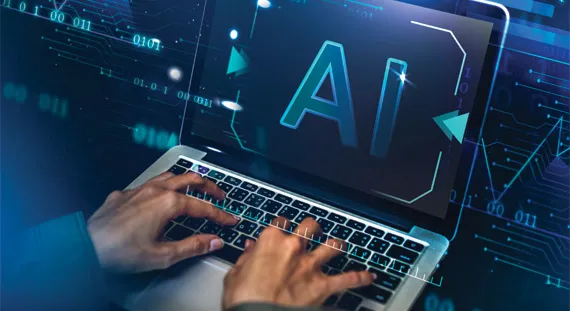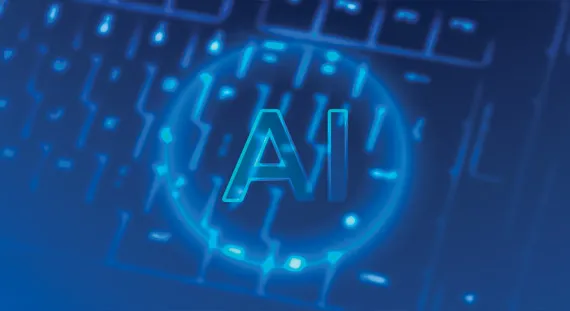Artificial Intelligence| Expectations vs. Reality
Nobody is sure about the advancements yet. But no matter what, it will definitely open a new era of revolution and technology, which was previously unfathomable.
What is Artificial Intelligence?
Artificial Intelligence (AI) is quite the hot topic for a talk in today's world. Everybody seems to have been impressed with what we are able to achieve with it so far. And as for what the future holds, everybody is thrilled to find out what it will unleash.
So, what really is artificial intelligence, and how does it work?
Artificial intelligence (AI) uses computers and technology to simulate the human mind's problem-solving and decision-making abilities. It is a broad topic of computer science that focuses on the development of intelligent machines that can perform tasks that would normally require human intelligence. The four types of artificial intelligence include reactive machines, limited memory, theory of mind, and self-awareness.
To help us understand what it is and how it works, let's look at a few examples
Most common are Siri and Alexa in phones, self-driving tesla cars, Robo-advisors, conversational bots, and even Netflix's recommendations according to your taste. These are a few well-known examples of AI.
But is this it?
OR
Is there more?
For starters, it is definitely not what science fiction movies like terminator or transformers depict! Well, AI can refer to anything from Google's search algorithms to IBM's Watson to weapons systems.
How does AI work?
To fully comprehend how Artificial Intelligence works, one must first learn about the numerous subdomains of AI and how these apply to various industrial fields. AI allows the software to learn automatically from patterns or features in the data by combining massive volumes of data with fast, repeated processing and intelligent algorithms. It is a diverse field of study that includes a wide range of theories, methodologies, and technologies. The primary subfields of AI are listed below.
- Machine Learning:
- Deep Learning:
- A neural network:
- Computer Vision:
- Natural Language Processing:
Machine learning (ML) teaches a computer how to make inferences and conclusions based on previous experience. It recognizes patterns, analyses hidden insights in data, and infers the meaning of these data points without relying on human experience to draw a decision. This automation of reaching conclusions by analyzing data (without explicitly being programmed for where to look or what to conclude) saves firms time and helps them make decisions.
It's a machine learning technique that learns complicated patterns in vast volumes of data using massive neural networks with many layers of processing units, using increases in computing power and improved training procedures. It trains a machine to classify, infer, and predict outcomes by processing inputs through layers. Image and speech recognition are two common uses.
Human neural cells and Neural Networks both work on the same principles. Neural networks (also a type of ML) are a set of algorithms that apprehend the relationship between various underpinning variables by responding to external inputs and analyzing the information in the same way that a human brain does.
Computer vision algorithms attempt to comprehend an image by dissecting it and analyzing various elements of the objects by using pattern recognition and deep learning. It aids the machine's classification and learning from a group of photos, allowing it to make better output decisions (in real-time) based on prior observations.
NLP is the science of a machine reading, understanding, and interpreting a language. When a machine recognizes the user's intent, it responds accurately. Natural language interaction is the next stage of NLP, which allows humans to engage with computers using daily language to execute tasks.
Where and how is AI used?
To answer where and how AI is used, it is first imminent to understand that AI falls into two categories. Narrow AI and Artificial General Intelligence (AGI). Narrow AI, or "Weak AI," is a type of artificial intelligence that functions in a constrained setting and mimics human intelligence. It frequently concentrates on mastering a specific task. AGI, or "Strong AI" is a machine with general intelligence and can use that intelligence to solve any problem, much as a person can. It is a machine that acts as a self-aware awareness capable of solving problems, learning, and planning for the future. Today, AI systems have a wide range of real-world applications. Some of the most common examples include speech and facial recognition, customer service (Siri, Alexa, and sites with virtual agents like slack), google search, recommendation engines, automated stock trading, and more.
How is artificial intelligence changing the future of marketing?
As AI becomes more accessible, agencies may now utilize it to analyze data, predict trends, and improve the quality of their brand.
As a result, how a company handles digital marketing is drastically changing. AI will pave the way for a more advanced business strategy. Artificial intelligence is the most significant part of a marketer's data strategy, according to 61% of marketers. AI already enhances productivity, according to 80% of business and tech leaders. 97% of mobile users already use AI-powered voice assistants. Manual and repetitive jobs are already automated.
It will soon assist humans in making decisions. By 2030, it will have contributed even more to global GDP. This expansion will be substantial to provide many employment opportunities while also altering how current jobs are performed. As consumer expectations rise, digital marketing consultants and artificial intelligence (AI) will need to develop to keep up!
Artificial intelligence: Future of growth
Data that is compelling reveals a depressing truth about today's growth. We have seen a significant reduction in traditional production levers' (like capital investment and labor) effectiveness to drive economic development. The stats, however, only convey part of the tale. Artificial intelligence (AI) is a new factor of production, with the ability to provide new sources of growth by changing the way people work and reinforcing the role of people in driving corporate success. According to an Accenture study, AI could double yearly economic growth rates in 12 industrialized economies by 2035 by changing the nature of employment and establishing a new connection between man and machine. The influence of AI technology on business boosts labor productivity by up to 40% and allows individuals to use their time more efficiently. Artificial Intelligence can enhance and exceed the current capability of capital and labor to drive economic growth.
Can artificial intelligence replace human intelligence?
Is it possible to replace us? No matter how many advancements we see in AI's widespread adoption, AI will never be able to replace human intelligence. Human intelligence defines the ability to think about ourselves and others. To feel empathy, make judgments (based on data and instinct), and read the emotions of those around us are the main components of human interaction. Machines will not be able to replicate it. However, just because computers can't do it right now doesn't imply that it won't be possible in the future. It is still one of the most contentious issues in AI today. While some experts believe it will take centuries for us to attain human-level AI, several AI researchers at the 2015 Puerto Rico Conference anticipated it would happen by 2060. Because the essential safety study could take decades to complete, it is prudent to begin immediately.
Future of AI
It's impossible to deny the fact that technological improvements have made our lives a lot better. AI and other technologies have taken over everything, from music suggestions to map directions, mobile banking to fraud protection. The border between progress and destruction is thin. AI has made our lives easier. It is available 24/7 and provides digital assistance, and helps make faster and rational decisions.
However, Artificial intelligence is not only influencing the future of every sector and every human being. It is also driving emergent technologies such as big data, robotics, and the Internet of Things. In short, AI's purpose is to create software that can reason and explain based on information. AI will allow humans to engage with software in a human-like manner. And provide decision help for specialized activities, but it will never replace humans. Based on its growth rate, it will continue to be a technical innovator for the foreseeable future.


